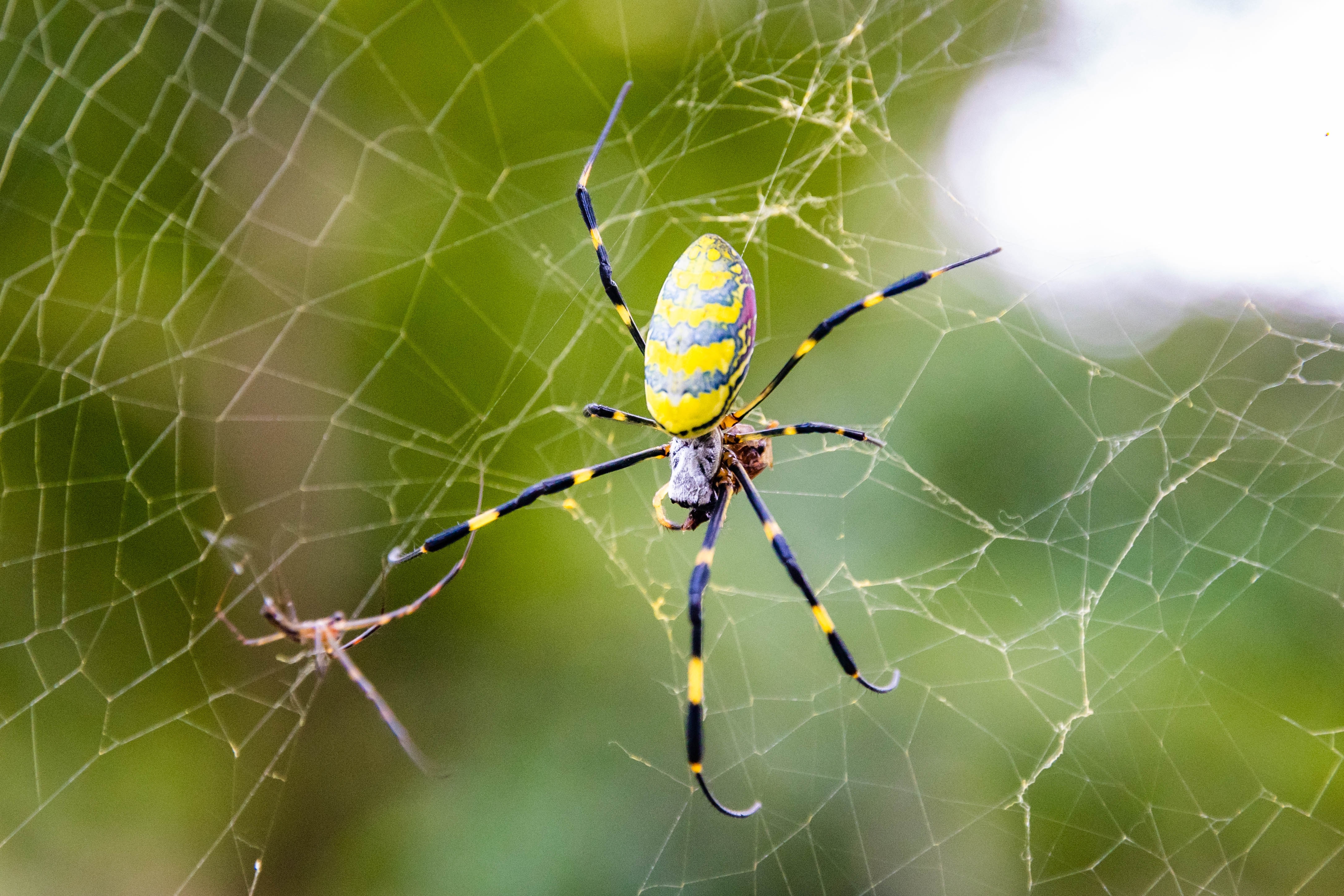Joro spider is a large orb weaver spider. Female Joro spiders weave large webs that can reach up to 10 feet (3 meters) wide. Joro spiders are native to Asia, including China, India, Japan, North and South Korea, Taiwan, and Vietnam. They have also become an invasive species in some areas of the United States. Joro spiders are named after Jorogumo, a shape-shifting spider creature of Japanese folklore. 
Adult female Joro spiders are large, with brilliant silver, yellow, and black coloration. The body can be up to 1 inch (25 millimeters) long, and the legs can reach up to 4 inches (100 millimeters) in length. The female’s abdomen is cylindrical and marked by bright yellow and silver-blue bands. The legs are black with yellow bands. Adult males are smaller and duller compared with females. The male body grows up to 1/3 inch (8 millimeters) long. Male Joro spiders are light brown with stripes down the abdomen. Their legs have light brown bands.
Female Joro spiders construct unusually large webs. They build orb webs, which feature a series of spirals. The threads of a Joro spider web have a yellow or gold tint. Male Joro spiders do not build webs. They are often seen in the webs of female Joro spiders. Joro spiders build their webs in windy areas and near lights to attract insects. They primarily eat mosquitos, stink bugs, and yellow jackets.
The Joro spider has a lifespan of one year. Most adult Joro spiders cannot survive cold winter weather. Female Joro spiders lay a single egg sac containing 400 to 1,500 eggs in the fall. The female dies soon after constructing the egg sac. She attaches the sac to tree bark or leaves or to building structures used to anchor the web.
Joro spider eggs stay in the papery silk egg sac over winter. In the spring or early summer, spiderlings emerge from the egg sac. While young, the spiderlings can travel by ballooning. In this process, a spiderling releases silk that catches the wind, carrying the spiderling with it. If it catches a strong wind, a spiderling can travel hundreds of miles or kilometers.
Joro spiders likely traveled to North America on shipping containers. Americans first discovered the spider in three counties in Georgia in 2014. The spider spread throughout Georgia and later appeared in Alabama, North and South Carolina, and Tennessee.
